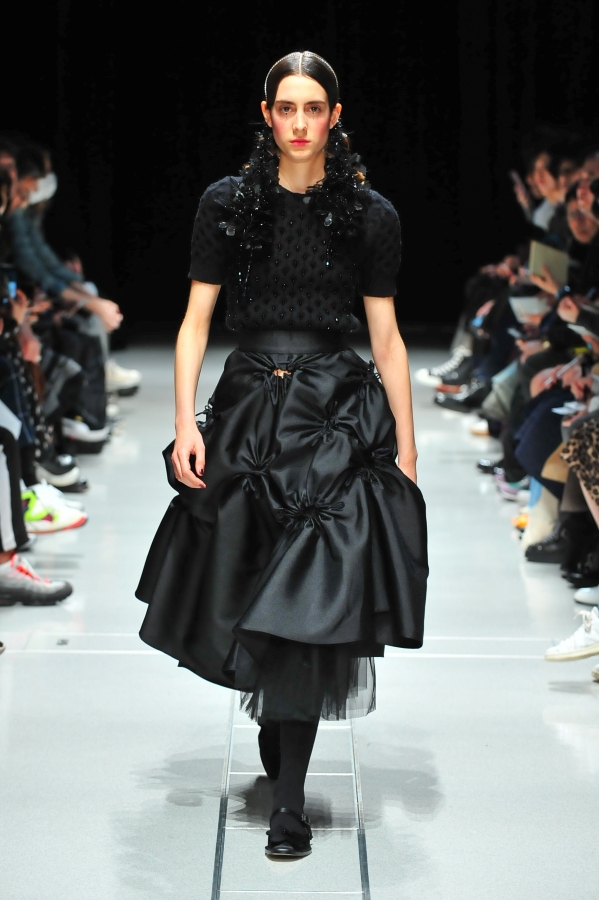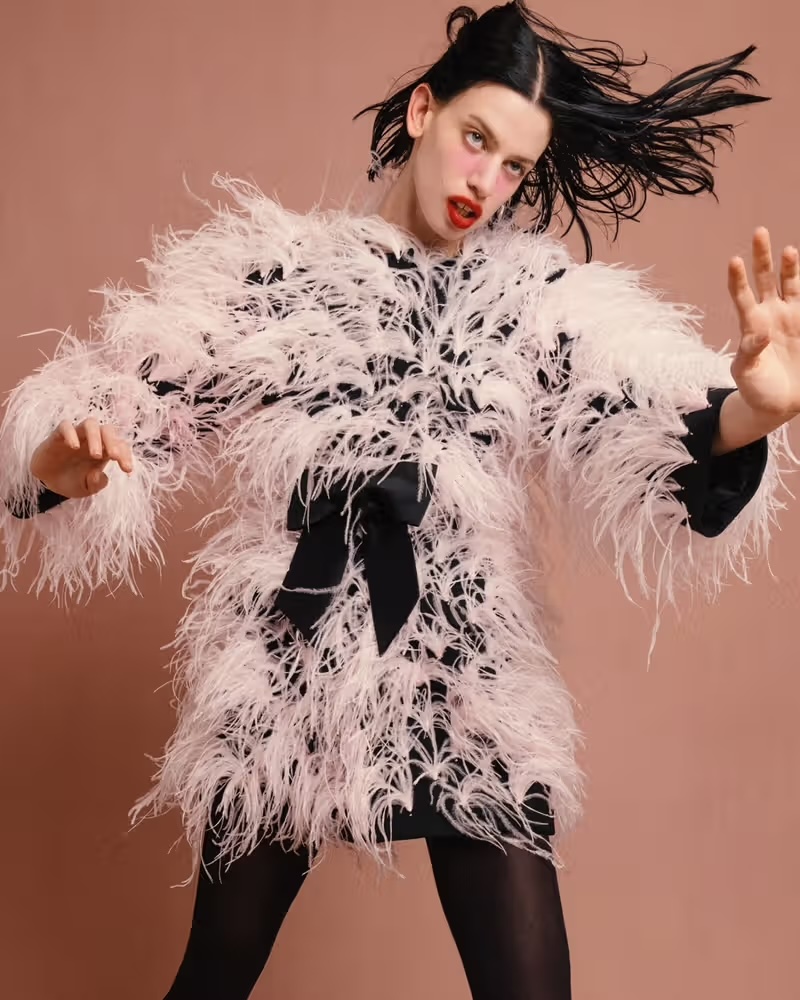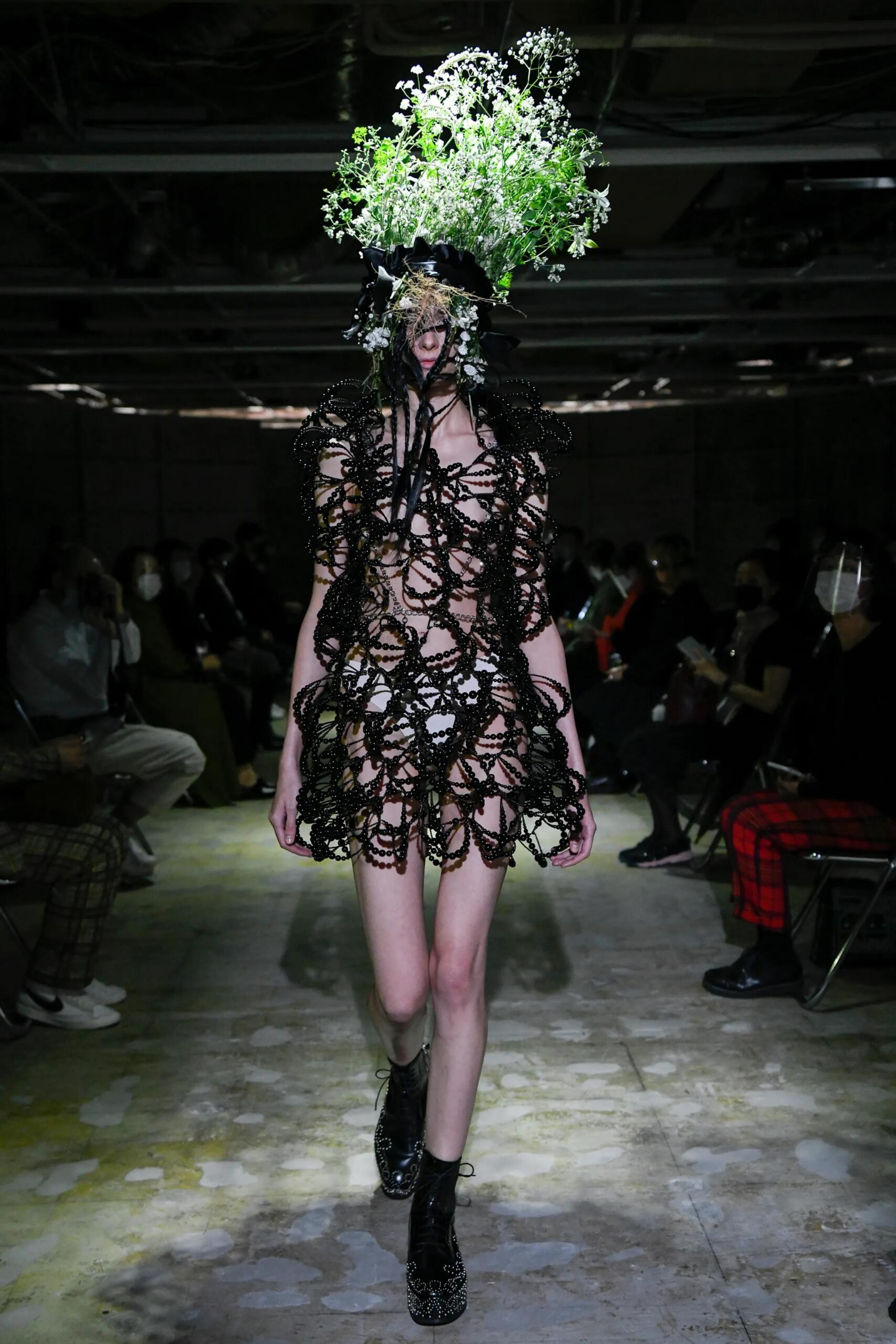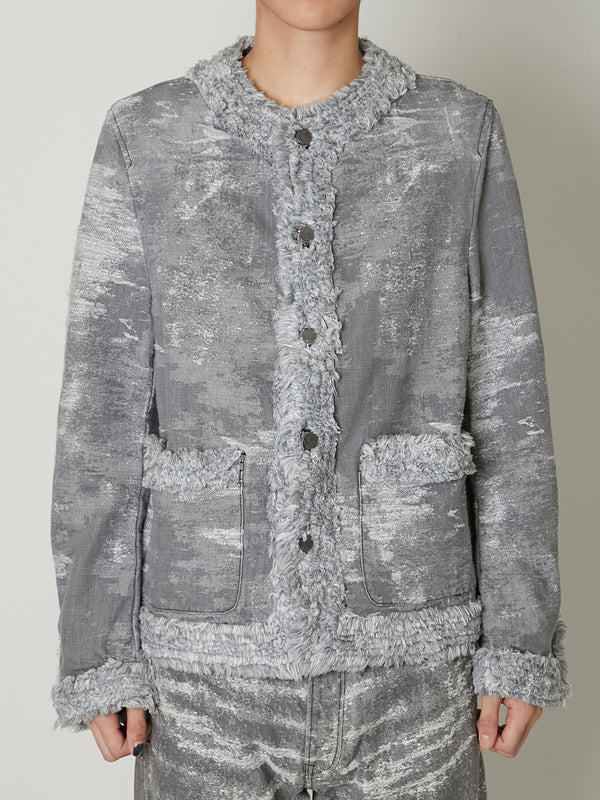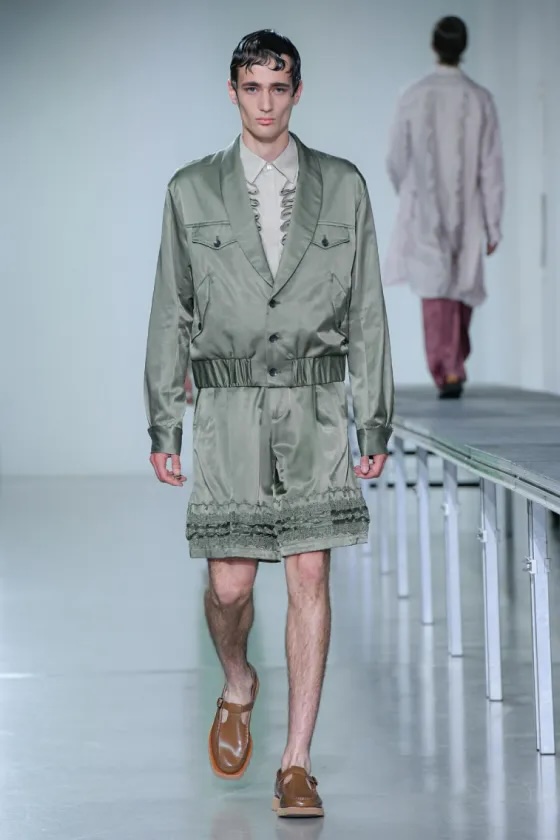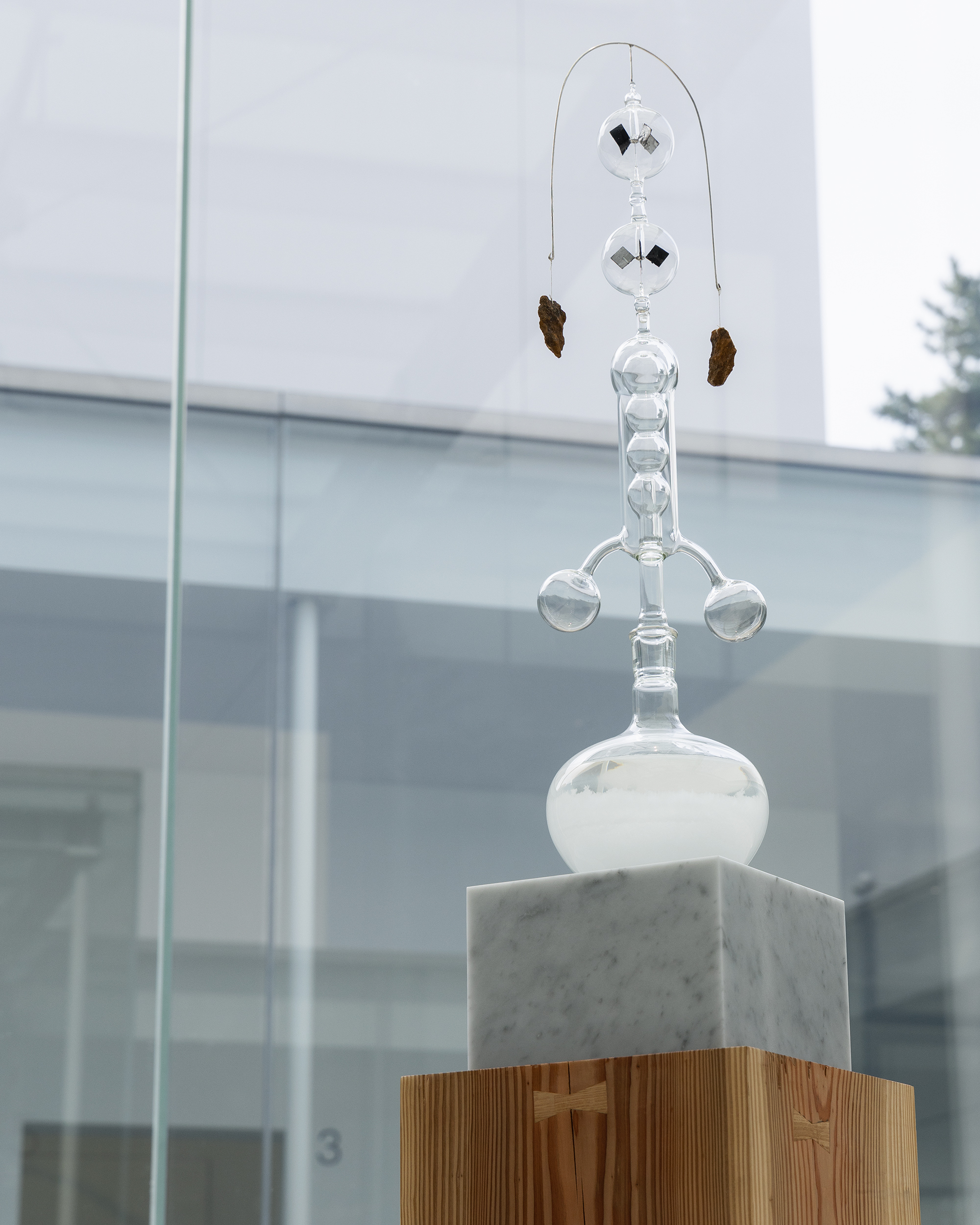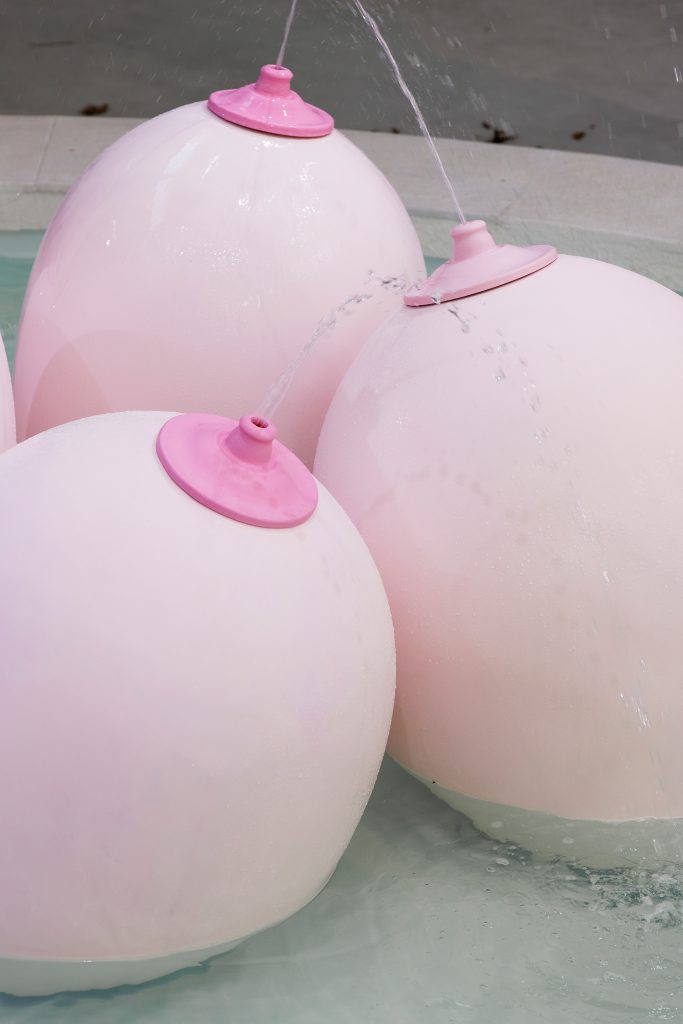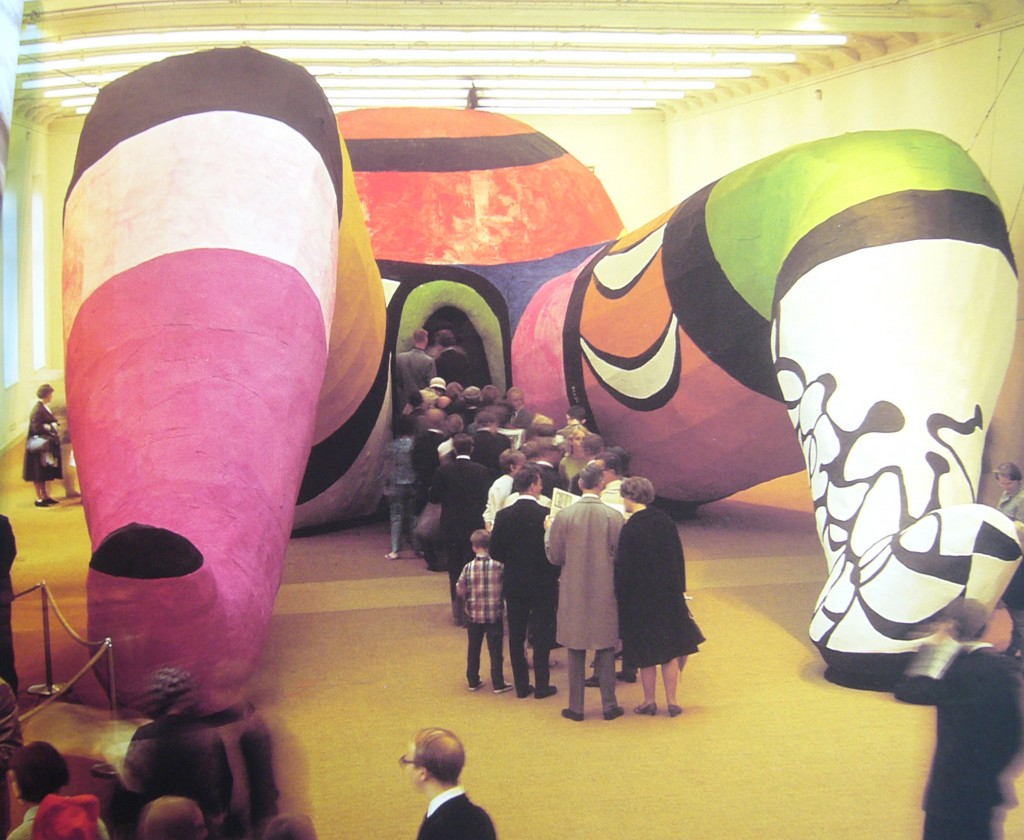Japanese PUNK Is a Fermentation
In some places, punk dies loud
— with studs, screaming, and leather jackets.
And then there’s Japan.
Here, punk never dies. It ferments.
Japanese punk isn’t about building a new world.
It’s about slowly composting the one we’ve been given.
Here, refusal isn’t a scream — it’s a material. A texture.
An art of not enough or wrong on purpose.
In Kei Ninomiya, dresses turn into black lace monsters, suspended mid-air like nervous flowers.
In SHUSHU/TONG, the garments are mutated dolls — sliced mid-adolescence.
Even the knitwear of TAAKKfeels wilted by its own anxiety.
This isn’t fashion.
It’s a kind of passive-aggressive rebellion: everything is too much.
Too pink. Too soft. Too fragile. Too quiet.
It’s punk with no urge to persuade.
It just corrupts — slowly, stylishly.
It's post-identity punk. Not saying "I'm this" but "I'm too many references"
The body as battlefield
In Japanese punk, the body is always under tension.
Overdressed or barely there. Wrapped, veiled, swallowed by its own layers.
Harajuku looks, long dismissed as cartoonish,
were actually visual detonators.
Cosplay becomes politics. Cuteness hides the monster.
And fashion here isn’t about identity — it’s about dissolution.
Want to know who I am? Look at everything I put between me and you.
Refusal, minus the noise
Real Japanese punk? It says nothing. No slogans. No manifestos.
Just cuts that don’t exist. Garments that aren’t supposed to hold together.
A style that seems to escape through its own seams.
This is minimalism as middle finger — clothes without gender, silhouette, or marketability.
You can’t buy it. You can’t copy it. You can only watch — and feel slightly… Not enough.
